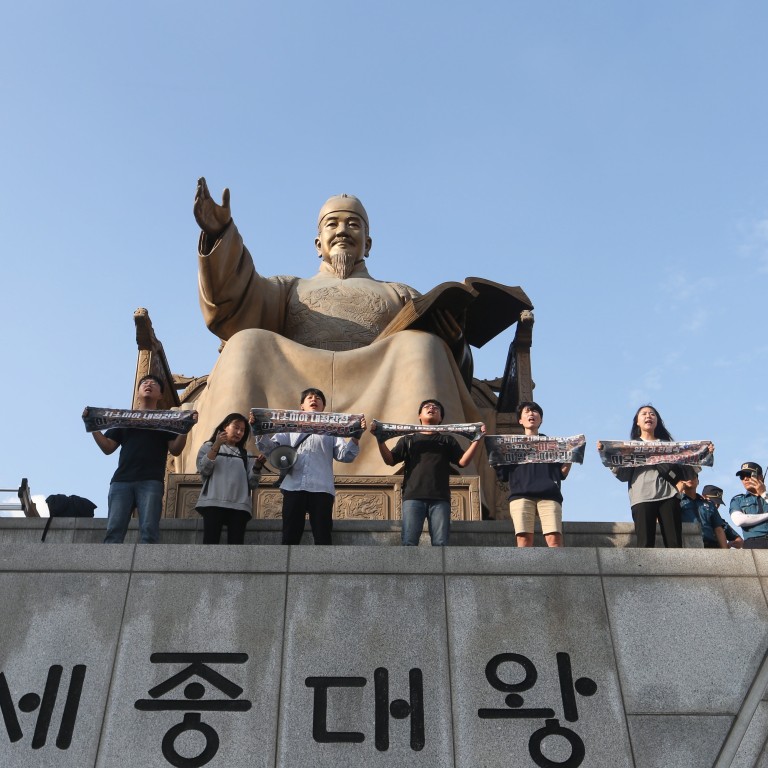
University students scale wall of US embassy in Seoul in protest against American troops in South Korea
- Police arrested more than a dozen protesters on Friday after they were seen using extension ladders to scale the walls of the secure embassy and consulate
At least 19 South Korean university students were arrested Friday after climbing the walls of the US embassy in Seoul and attempting to enter the residence of Ambassador Harry Harris. Students were reportedly protesting the presence – and cost – of American military forces in the country.
Students can be seen on video using extension ladders to scale the walls of the secure embassy and consulate while others unfurl banners with messages that included “Leave this land, Harris”.
Students shouted, “Stop interfering with our domestic affairs,” and chanted “Get out,” and “We don’t need US troops,” before being removed by police, Reuters reported.
A State Department spokesperson who spoke on the condition of anonymity to talk candidly confirmed the Friday breach. Seoul Metropolitan Police entered the US government facility at the embassy’s request and arrested the students.

“We note with strong concern that this is the second instance of illegal entry into the Ambassador’s residential compound in 14 months. We urge the ROK to strengthen its efforts to protect all diplomatic missions to the Republic of Korea,” the spokesperson said.
South Korea’s Ministry of Foreign Affairs said it would tighten security for the US Embassy and the ambassador’s residence, according to Reuters.
“Any harm or attack on such a diplomatic mission cannot be justified under any circumstances, and the government will take all appropriate measures to protect the missions and prevent any acts that disturb their well-being,” the ministry said in a statement.
The Korea Herald, an English-language newspaper based in Seoul, said Friday’s demonstration was a surprise protest by what it characterised as a “progressive civic group” of students.
The US and South Korea have a burden-sharing agreement stemming from a 1953 mutual defence treaty after the halt of the Korean war. As part of the agreement, roughly 28,500 US troops are stationed in South Korea.
Pro-Pyongyang South Korean students break into home of US envoy
The cost of maintaining an American military presence to aid in South Korea’s defence against North Korea has been a point of tension between the US and South Korea in recent months, particularly after President Trump inaccurately claimed during a February Cabinet meeting that “South Korea is costing us US$5 billion a year. And they pay – they were paying about US$500 million for US$5 billion worth of protection.”
According to a previous analysis by The Washington Post, South Korea’s payment to the US last year tallied around US$830 million, which covered around 40 per cent of the cost of the US deployment; the total cost for the United States is closer to US$1.25 billion, not the US$5 billion figure Trump stated.
US military bases have a complex history in South Korea due not only to politics but their association at times with prostitution rings, black markets and other vices. Yet even if hostilities were diffused between North and South Korea, many South Koreans support an ongoing US presence.
By the end of the year, the US will complete its move of its largest foreign military base from Seoul, where it’s been for 70 years, to the massive new Camp Humphreys facility roughly 45 miles to the south.
In August, Trump called for South Korea to pay more for military protection by US forces. Officials from Seoul and Washington are expected to meet in Hawaii next week for another round of negotiations on the burden-sharing agreement.

